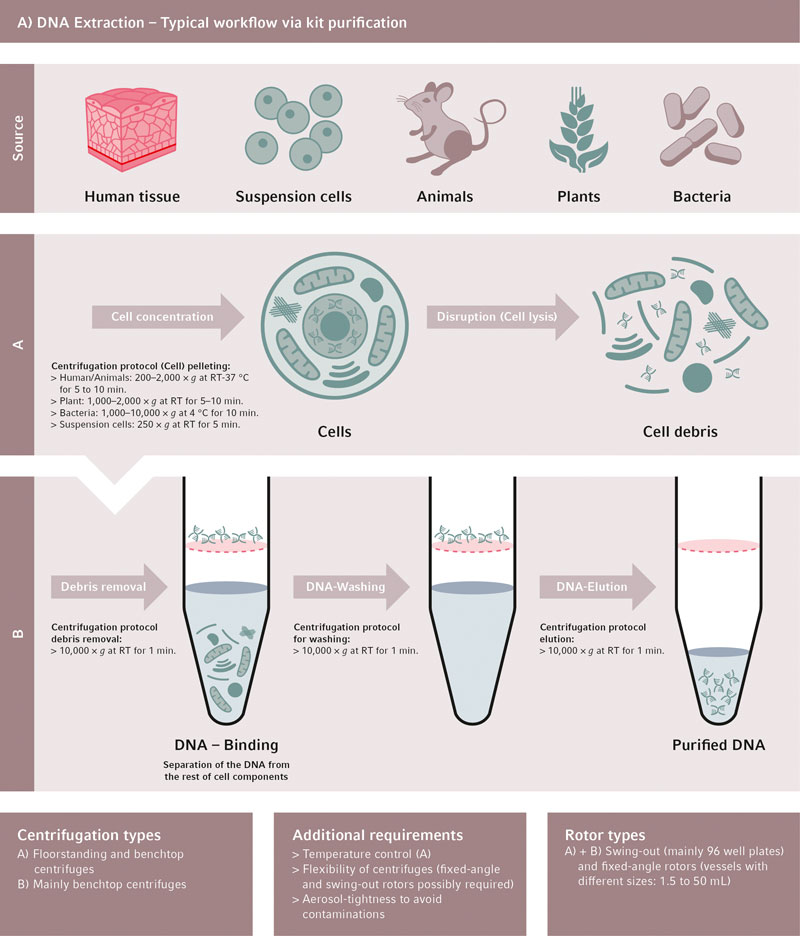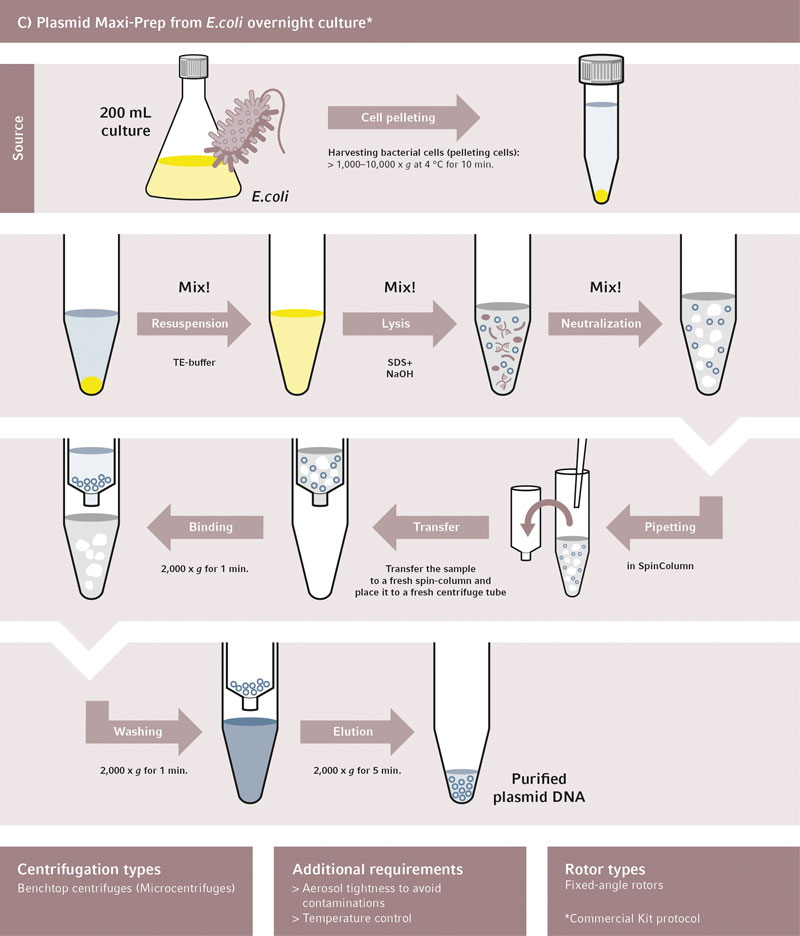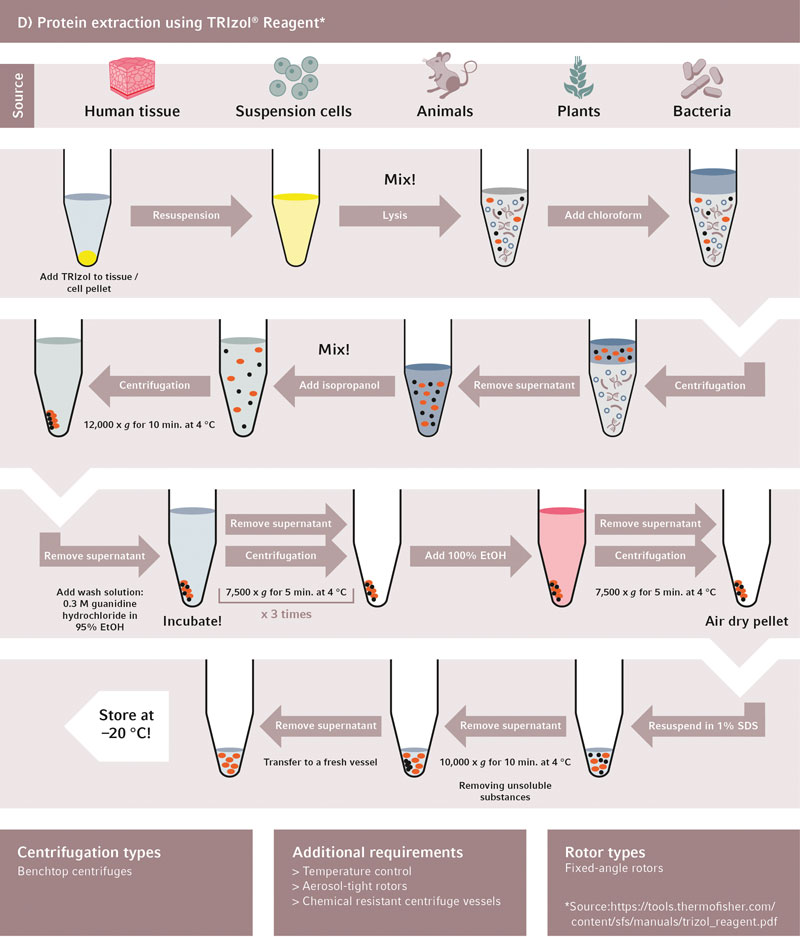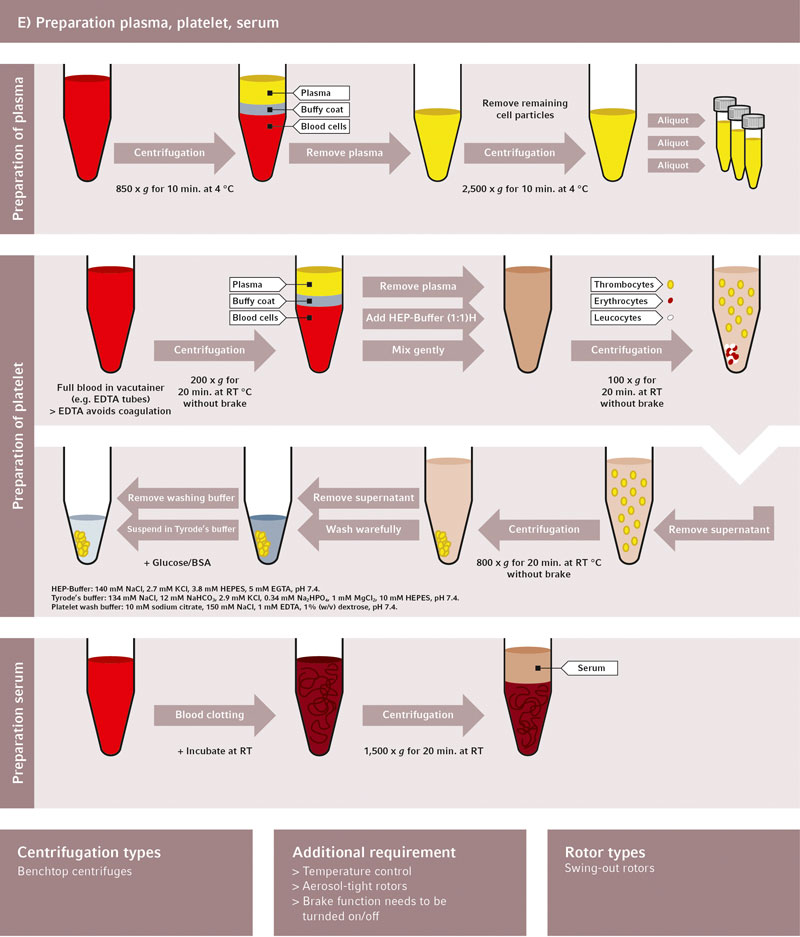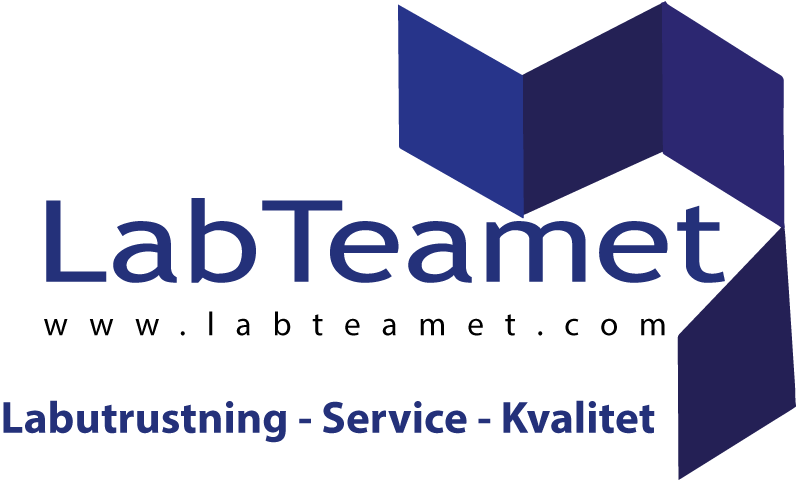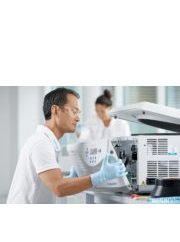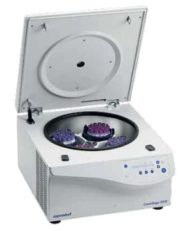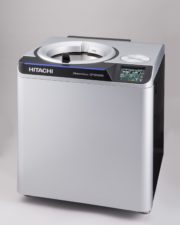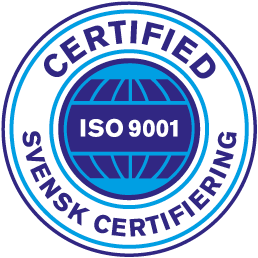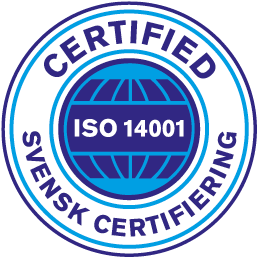Centrifuge applications
Centrifuge applications
Centrifuges are essential in the laboratory to separate substances based on density under g-force. Different methods, such as isopycnic, ultrafiltration and pelleting, are used depending on the sample type.
042-300 91 30
Do you have any questions? Call customer service
Centrifuges are used for many separation processes in the laboratory. The centrifuge works on the sedimentation principle: substances are separated according to their density under the influence of g-force. Depending on the sample type, there are several centrifugation methods available. Examples include isopycnic, ultrafiltration, density gradient, phase separation, and pelleting.
One of the most common methods of centrifugation is pelleting, which is used for many popular purification protocols, such as:
- DNA extraction
- Plasmid DNA extraction (mainly bacteria or yeast)
- Protein extraction
- Extraction of blood cells
You can find some typical application protocols in our “basics in centrifugation” section. In each case, centrifugation, centrifuge accessories, centrifuge function and rotor specifications are stated.
